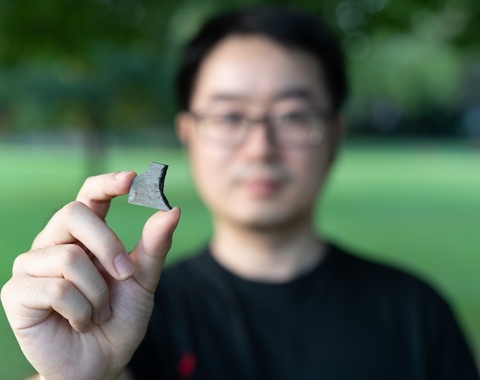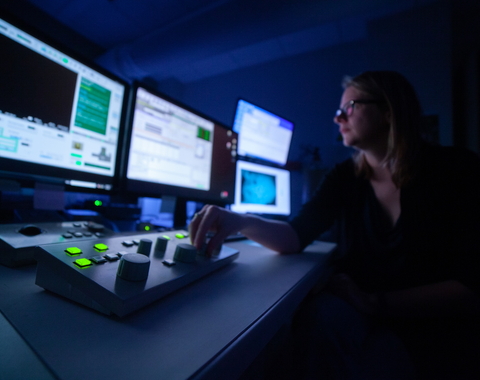by Katy Cain
Bryné Hadnott is an artist turned planetary scientist turned software developer. Her apartment in Seattle abounds with the hints of her many passions. Solar System sculptures, posters from anime conventions, notebooks, potted plants, coffee mugs, pride flags, and personal paintings join forces to form Hadnott’s perfect planetary science sanctuary.
“We have little pieces of art peppered throughout the apartment, and I have a lot of plants,” says Hadnott as she lifts a pot with iconic heart-shaped leaves, “Here’s my monstera! I’m very proud of her.”
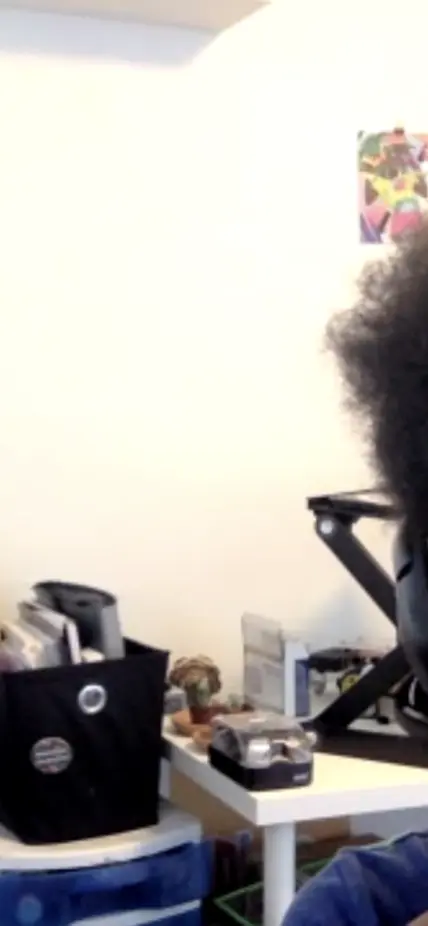
This space is clearly designed to get creative juices flowing, and Hadnott thinks creativity is essential for her current role as a software developer at Carnegie’s Earth and Planets Laboratory. With support provided by the Brinson Foundation, she works with Carnegie Staff Scientist Johanna Teske to build and automate a scheduling tool for the Carnegie Institution for Science’s Planet Finder Spectrograph (PFS)—an instrument on the Magellan Telescope used to measure changes in the wavelength of light coming from stars.
Coding telescope controls
Teske is part of the PFS team and has taken on the role of scheduling observations from astronomers worldwide. These scientists are interested in signals characterisic of tiny wobbles in their target stars that could be caused by an orbiting exoplanet.
Scheduling time at a telescope is surprisingly complex and requires a detailed understanding of astronomy and our own atmosphere to figure out when the best time to view a star might be. Teske manually scheduled hundreds of observations using a system of Trello boards and Google spreadsheets before she hired Hadnott to help build a more automated solution.
“This is not a straightforward task; there are many different variables and priorities to balance,” said Teske, “When I hired Bryné, I told her we might not be able to find a perfect solution. Lucky for me, she was enthusiastic and up for the challenge.”
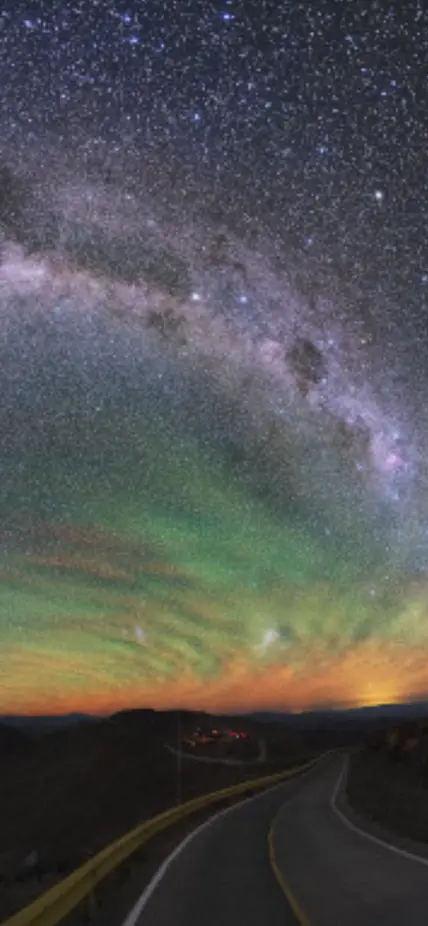
Hadnott explains, “My job has been to find a way to automate literally every step, so people can just say ‘Here are my stars. Here are the nights I want to observe and the cadences I want to observe at.’ And then the algorithm can say, ‘Here's the list of stars that we're going to observe for a given night, based on the local conditions, and the best times to observe them.’”
Teske adds, “Bryné’s work will significantly streamline the observation planning process, which will leave more time for digging into the planet characterization.”
But Hadnott’s interests don’t stop at programming telescopes and looking for exoplanets that wobble their stars. She’s also an artist, an aspiring activist, a science writer, and a STEM educator. She’s written for Physics Today and the AAS Women in Astronomy Blog; she serves on the Lab & Research committee for SoundBio (an innovative biology maker space); and she’s a co-organizer for Black in Astro.
Her passion for astronomy—and breaking it down for non-scientists—is evident as she explains her telescope project.
“One of the coolest parts of this project has been learning about stars and exoplanets and all these different cool ways that we can measure them,” says Hadnott. “We often think stars are these static objects, but they jiggle and pulse in all these different, weird timescales that can tell us so much about the Universe. They’re doing wild things all the time!”
Finding the art in science
When you consider her passion for science and science outreach, it may come as a surprise to find out that she had zero plans to be a scientist when she started college. She began her undergrad at Washington University as an art major focused on print-making and drawing charcoal portraits.
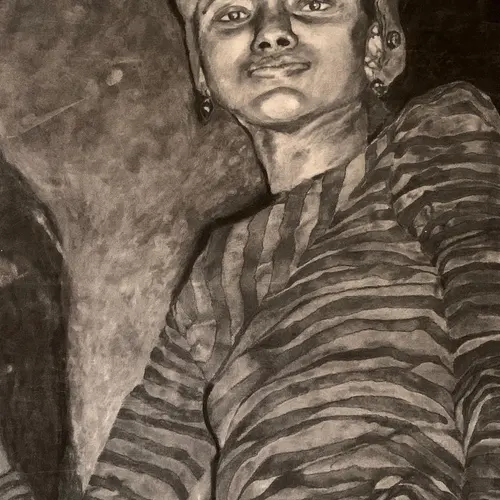
“We were doing these big chiaroscuro studies where we focused on the old masters like Caravaggio, who use extreme highlights and lowlights in their paintings.”
But she had to take a science requirement, so she chose a class on remote sensing. That’s when she first saw pictures from Mars and was stunned.

“It was this perfect example of chiaroscuro, but a robot on another planet took it!”
She was hooked. She switched majors, took most of her basic science and math requirements in one summer, went to grad school, and left with her Masters in Earth and Planetary Science from John Hopkins University.
“What I want everyone to know is, if you think you can’t study astronomy because it’s too hard—don’t worry! I was the kid drawing anime in math class. If I can do it, you can too.”
From Space Spy to STEM Outreach
During grad school, she started coding in MatLab and then soon switched to Python, which got her her first job out of grad school coding for a company that made CubeSats that the US Department of Defense used for surveillance.
This job allowed her to hone her skills with professional software engineers, but it also posed some serious ethical and moral challenges. After a year of coding in the space-tech industry, she decided it was time to leave.
She turned her attention to science writing and outreach. She’s worked on several STEM curricula through STEMCore Consulting aimed specifically at minority students. Her overarching goal is to make STEM careers more accessible to black women and other underrepresented minorities.
Making Science Safer for Everyone
As a young black woman, Hadnott experienced the double whammy of academia’s racism and sexism first hand.
Hadnott recounts, “You’re the one Black person there and everyone’s asking ‘Bryné, why are people kneeling?’ Or even, ‘Bryné, why does your hair look like that?’ And that gets really old.”
“You often hear people talking about making a ‘safe space’ for minorities. But these academic institutions need to make many spaces, not just space. Otherwise, you end up being the token. The one Black person who can—and often should—leave,” says Hadnott, who herself experienced being perceived as the “token Black person” by her colleagues—first at Cornell and then at John Hopkins University.
Ultimately, her negative experience with academia is part of the reason she had to step away before finishing her Ph.D.
“It makes you feel unwanted and like the space isn’t safe for you.”
What does a safe space look like? To Hadnott, it means putting more women and people of color in power so they can affect change and treat racism and sexism seriously when it comes up in the classroom or in the lab. “You’ll get more Black and brown people to come because they’ll know it’s a good space. That’s my sister there. She’s got me.”
She adds, “Promote the hell out of the women and people of color on your campus. They deserve it. They’re working crazy hard.”
What’s next for Bryné?
One thing that’s been kicking around in the back of her mind is the “people’s planetarium.”
“I know Ashley Walker, who founded #BlackinAstro, talked about this, but we all have this goal of someday making a people's planetarium.” This planetarium would build anti-racist astronomy curriculums and focus first on Black and brown people’s mythologies and constellations. “It’s really far out on the horizon,” says Hadnott, “But I like saying it out loud, over and over again to remind myself, ‘Yes, do this!’”
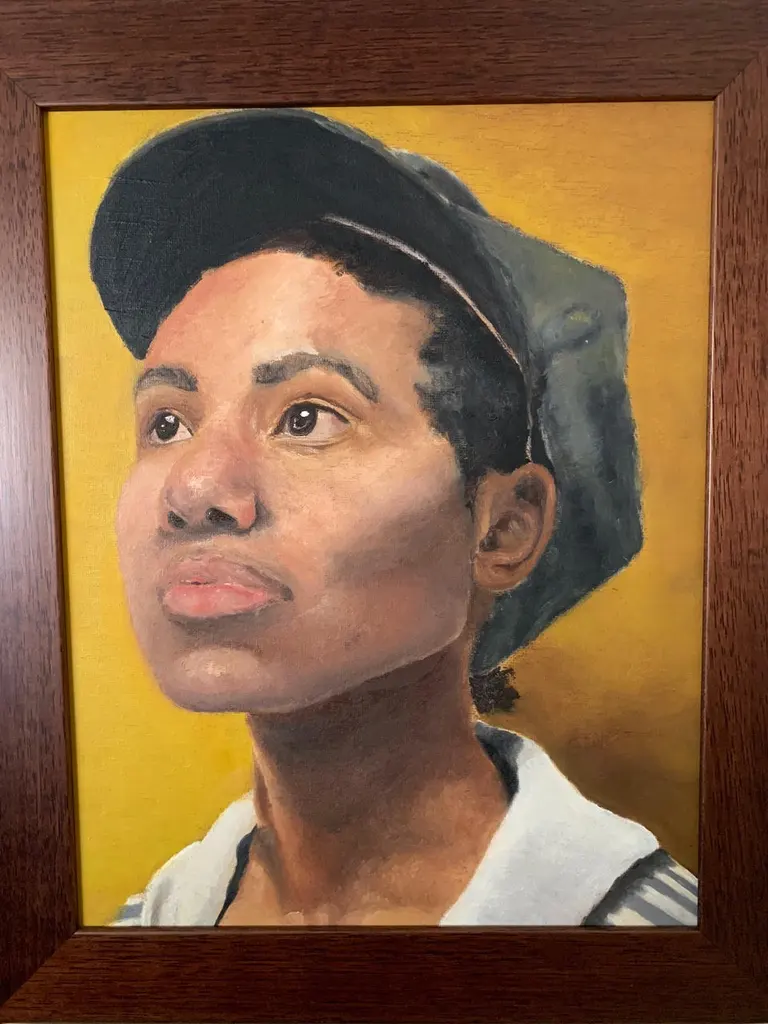
In the nearer future, Hadnott’s job as an astronomical software developer at Carnegie comes to an end in November, so she’s looking for new opportunities to use her skills. She’s also been thinking more seriously about getting into science writing.
“I love coding and problem solving, but if someone needed a science writer, someone who writes science curriculums, or, I don’t know, a quirky person to do some obscure research—I’m not picky! I would take all those jobs.”
As for the Magellan project, it’s moving along faster than expected. Hadnott has finished the basic programming so scientists can optimize their telescope time, and Teske doesn’t have to spend all of her time scheduling astronomers. They’re now looking for new ways to automate scheduling repeat observations in a single night.
“I think what makes me really good at this job is my background as a weird art kid. It allows me to solve new problems in unique ways.” Says Hadnott, “This is a problem that no one has a solution to, and so I can solve it as creatively as I want.”


